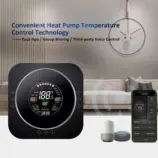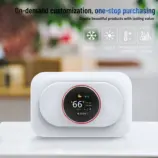We all know that every home has a thermostat that gives us control of our heating and air conditioning systems, allowing us to set the indoor temperature at our convenience. This thermostat functions like the human brain, commanding the heating and air conditioning systems to start, run, and stop as needed.
Today, We'd like to delve into the world of thermostats from three angles:
- Common types of thermostats;
- The set-up and usage of basic thermostat functions;
- Simple diagnostics for thermostat malfunctions.
Thus, We'll look at the different types of thermostats, learn how to use them.
Understanding Different Types of Thermostats
First off, let's get acquainted with the variety of thermostats available. A thermostat, in the simplest terms, is a device that regulates temperature.
Take this one for example a round-shaped thermostat.(See right first image)
Yet another is rectangular( See right second image) , both of which belong to an older generation of mercury-controlled analog thermostats.
As of today, these mercury-controlled thermostats are gradually being phased out. They can still occasionally be found in older homes and commercial buildings that haven't updated their systems.
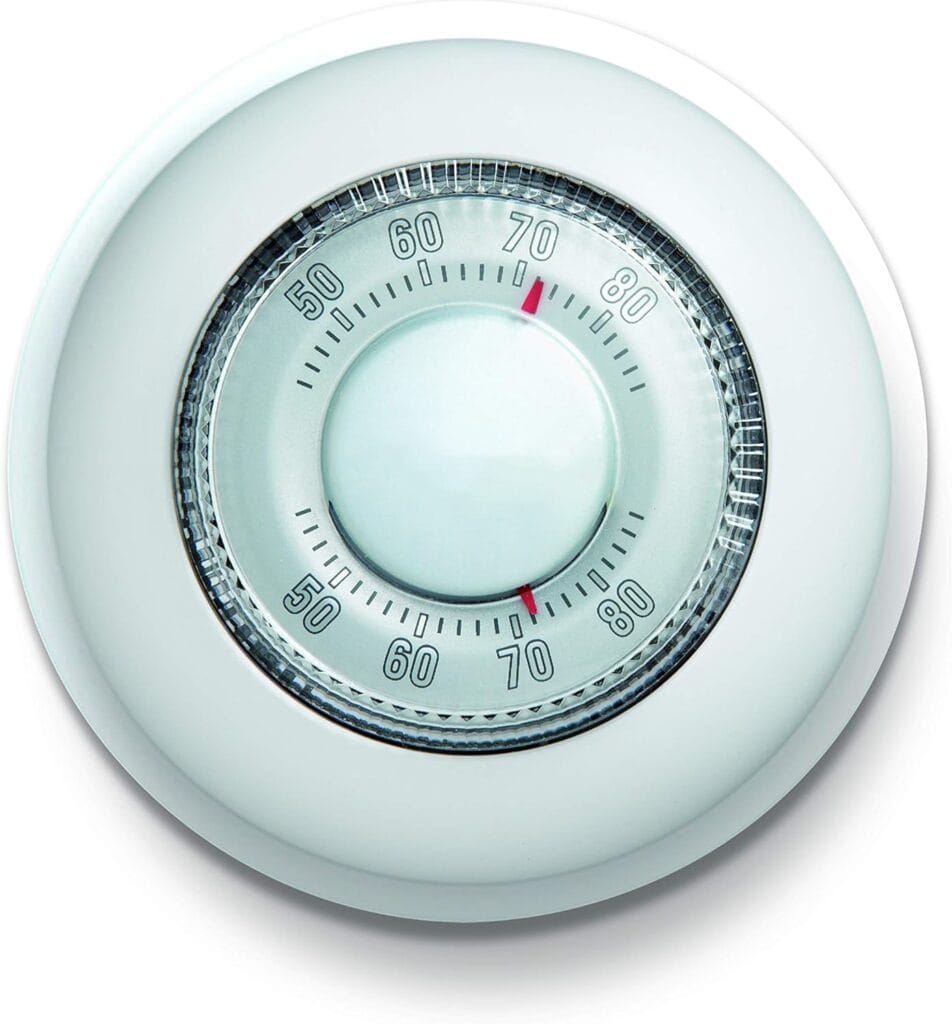
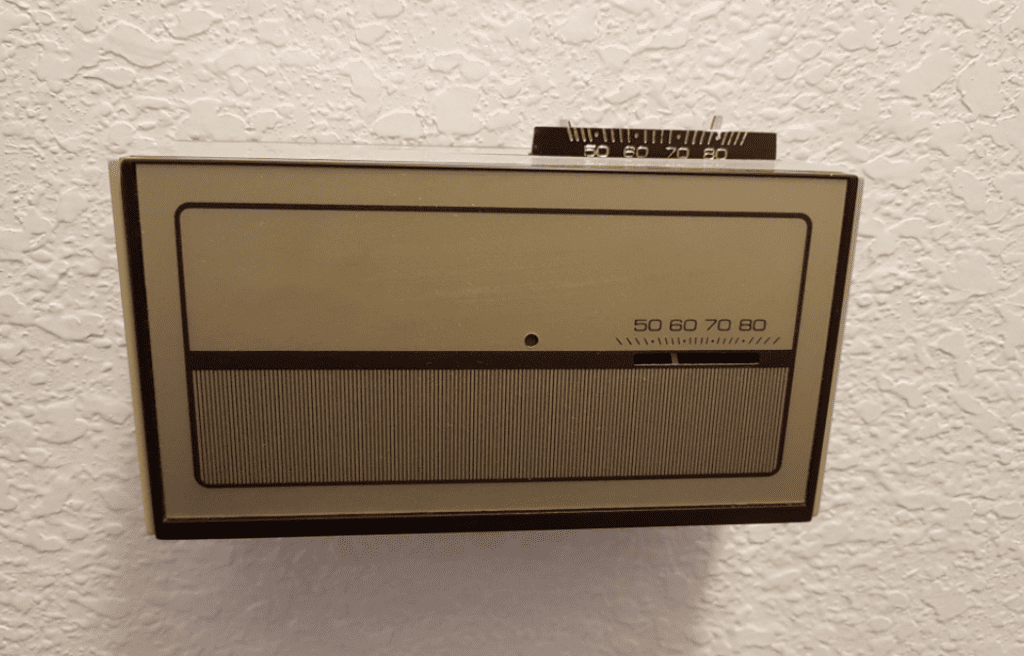
After that, commonly used are digital thermostats like this one. These are simpler and easy to operate also come with simply functionalities.
With technological advancements, thermostats have become increasingly sophisticated, giving birth to programmable thermostats.
These devices allow simple programming - you can set different temperatures for different periods.

For example, during weekdays when nobody is home, you can set a slightly lower temperature for energy saving. During weekends and after-work hours when you're home, you can set a slightly higher temperature. At night, when you're asleep, you can set a relatively lower temperature, and so on.
That being said, these thermostats can lead to heating malfunctions if not operated properly. Hence for those not well-versed in programming, it's better to stick to simpler models.
People may consider installing the easiest digital thermostat or a smart thermostat that allows for remote control.
Understanding the New Generation of Smart Thermostat
The latest advancements have led to what we call Smart thermostat #EcoNet-HP.
Smart thermostat come in all sorts of types. Not only can they control the temperature, but they also have features like displaying the indoor humidity and the temperature outside.
Smart thermostat can even adapt to the way you live, adjusting according to your habits.
And if something isn't working right, Smart thermostat'll let you know with an email alert. If you have a multi-story house and face the issue of uneven heat distribution, Smart thermostat, with some extra sensors, can help solve that problem too. Increasingly, smart thermostats are becoming a household staple.
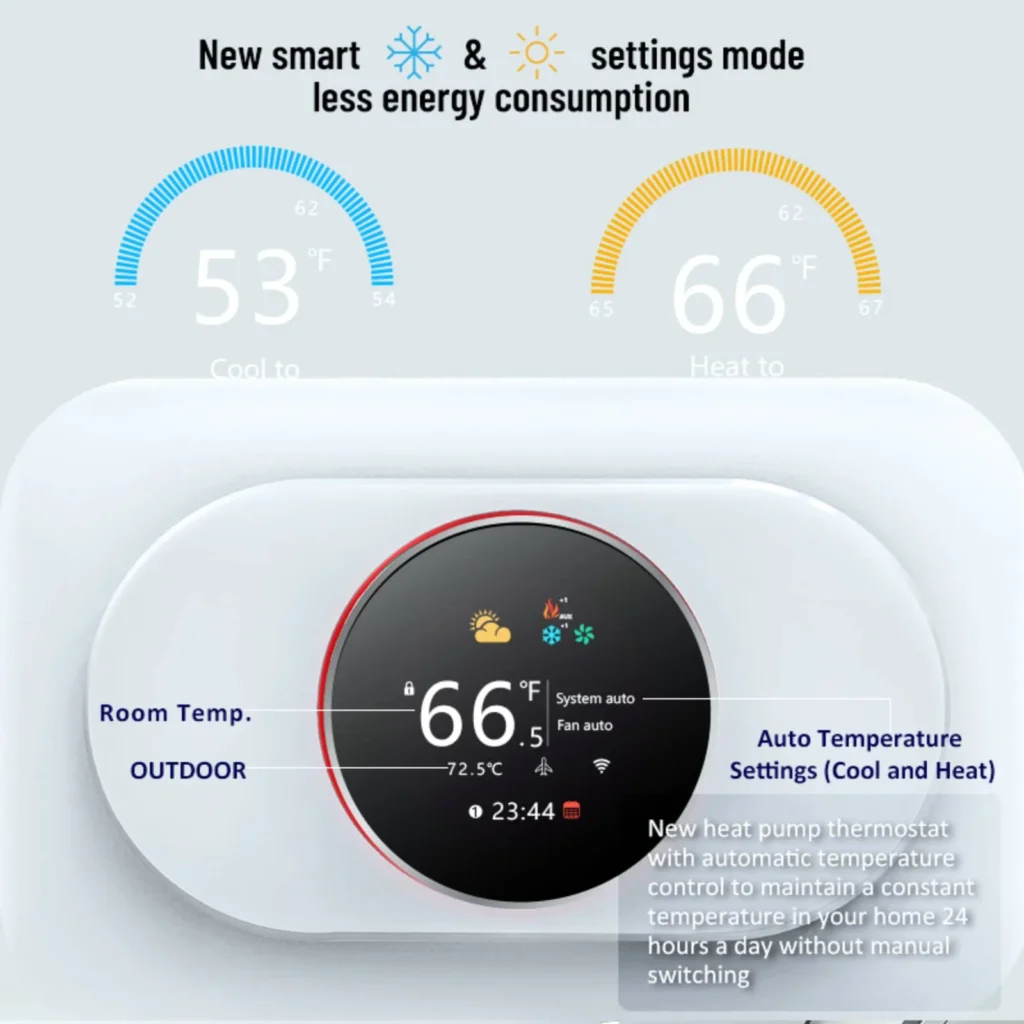
Understanding the Basics Functions of a Thermostat
Next, let's explore how to use the basic functions of a thermostat and diagnose common thermostat-related issues.
Regardless of what type of thermostat you're looking at, they all have two main sets of controls: one for selecting the operation mode and one for selecting the fan mode.
Take this simplest type of digital thermostat for example.
The right set of controls has three options: heat, off, and cool. Unsurprisingly, you'd select heat for winter and cool for summer.
In seasons like spring and fall when neither heating nor air conditioning is needed, you can set the thermostat to off.
Observant folks might notice that some particularly old furnaces and garage thermostats only have heat and off options.

Take a look at the left set of controls: the Fan mode. Generally, there are two modes, on and auto, also known as continuous and automatic modes. If set to on, the furnace blower will be continuously working to circulate indoor air. Many families, especially those without an air exchange system, tend to keep their fans set to On.
If set to auto, the fan operates only when the heating or air conditioning systems are running. When these systems are off, so is the fan, which can be energy-saving.
Identifying and Dealing with Common Thermostat Issues
So, the common question is: why is it that during winter sometimes the air blowing from the vent is warm, and at other times it's cold? This generally happens when the fan is set to on. To fix this, just switch the fan mode to auto.
But there's an exception - some new homes have HRV (Heat Recovery Ventilation) systems installed, where the air exchange system might also control the furnace fan. In such complex scenarios, it's better to call in a professional.
Once these two settings are done, you can set the temperature. You will always see two numbers on the thermostat. One represents the indoor temperature and the other represents the set temperature.
So, what do these temperatures do?
1. If the indoor temperature displayed on the thermostat equals the set temperature, it means your furnace or air conditioning is operating correctly. This is the simplest way to verify that your heating or cooling systems are working properly.
Some people have asked, "Why is my home so cold when I've set the thermostat to high? Is it because the furnace is broken?" or "It feels like my furnace isn't working right - it's too hot one moment and too cold the next." Well, check if the two temperatures on your thermostat match. If they do, your heating system is fine, and the issue lies somewhere else - but not with the furnace or air conditioning.
2. In winter, if the indoor temperature is lower than the set temperature, the furnace kicks in. Conversely, in the summer, if the indoor temperature exceeds the set temperature, the air conditioning starts. Regardless of whether you turn off the system or not, the heating or cooling won't start unless needed. For instance, if it's in the heating mode and the set temperature is 68 degrees Fahrenheit but it's already 70 indoors, the furnace won't operate.
After winter, when neither heating nor cooling is required, you have several options:
- You can turn off the furnace switch (which could lead to forgetting that it's off when needed, leading to a false diagnosis of a furnace malfunction - not recommended);
- You can set the thermostat to off;
- The lazy solution - set the desired temperature and let the device decide to operate based on indoor temperature changes. Especially with smart thermostat, you don't even need to choose between cooling or heating - it'll automatically control and adjust temperature based on your settings.
